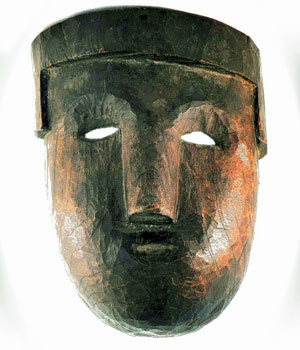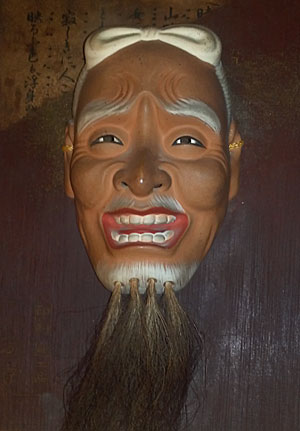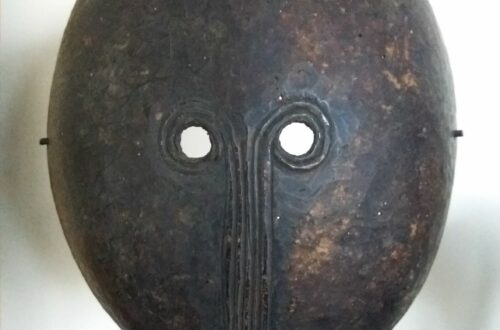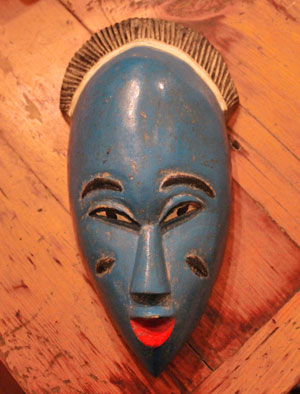
 Q: Thoughts on this one? I am being told its a 75-100 year old Malinche or dona marina from mexico… the wood type, carving technique on the front, and the shellac all make me think Japan-60-years-old.. little of this says Mexico to me. The glaze seems to be truly of age, with a high patina per the pictures. Not sure I’d feel the same in person. Nate, 632
Q: Thoughts on this one? I am being told its a 75-100 year old Malinche or dona marina from mexico… the wood type, carving technique on the front, and the shellac all make me think Japan-60-years-old.. little of this says Mexico to me. The glaze seems to be truly of age, with a high patina per the pictures. Not sure I’d feel the same in person. Nate, 632
A: If a serious collector like you is confused, chances are I will be too. I’ve included a picture of the rear because it might help someone else identify the piece. Others should also note that the final coating, whether shellac or varnish, may have been done by a dealer or collector. Let me add to Mexico and Japan– Alaska, Colombia or Nepal. Maybe MasksoftheWorld.com should start offering prizes.






One Comment
Bryan Stevens
There are masks of this general form from Veracruz, and because each carver does things a little differently from the rest, one can never feel certain that a detail- present or absent- means what it would if by a particular carver. There are female masks that look something like this from Veracruz, called Mojica masks, but this mask lacks features that one would like to see for that style, such as elaborate detailed hairstyle and remarkable shaping of facial details, with sweeping arched brows and cheeks. The backs are usually more formally carved also.
This could be a Moro type of mask from Veracruz, with this severe hairstyle and stereotyped sideburns. A male, not a female. The hole for a string at the top of the forehead is typical of Mexican masks; I guess there are holes on the sides to match, but I can’t see them in this photo.
I agree that the carving of the surface of the face, with these small chisel marks, is unusual for masks from Veracruz, and should make one wonder about another source.
I can’t see the patina on the back well enough to judge, but I don’t like it- too uniformly dark, as if from an applied stain. Real wear doesn’t create dark staining in the hollow spaces around the openings for vision, for example.